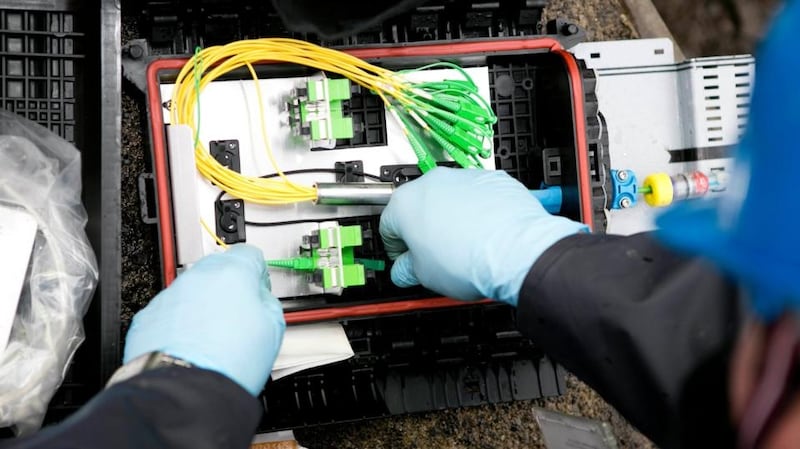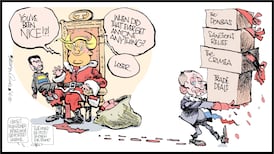On October 11th this year, the then minister for communications Denis Naughten delivered an untimely resignation speech to a rather sparse Dáil chamber. Political optics and reasons aside, Naughten’s speech resonated with many in the communications industry considering the following line:
“If I was a cynic, which I’m not, I believe the outcome is more about opinion polls than telecoms poles. It’s more about optics than fibre optics.”
Naughten, like his most recent ministerial predecessors, drove the information society agenda and had shown a willingness to press and drive the National Broadband Plan (NBP) with the required levels of energy, focus and enthusiasm. Naughten’s sentiment unveiled two truisms of Irish politics concerning opinion polls and political optics.
The controversy surrounding Naughten’s departure is set to play out based on a report by a highly respected telecommunications consultant, Peter Smyth. The future of the NBP and the 542,000 premises in the remaining intervention area hang in the balance as we await the Smyth Report findings.
Myths
Unsurprisingly, the communications industry has a number of its own myths concerning opinions and optics. Those myths require a concentrated debunking.
The first concerns the suggestion that merely having passed premises with underground fibre really means anything at all. As many businesses and consumers will attest, there is a stark difference between passing a premises and actually connecting the premises to the high-speed communications services delivered over that fibre buried in a duct under the ground.

The second is that there is no demand for high-speed fixed fibre services. The past two years have heralded a shift towards modernised agricultural, commercial and educational processes. The abolition of milk and other quota systems that allowed farmers to survive in many instances has meant that farmers have had to expand their businesses or face ruin as wholesale pricing is driven down and suppliers become more discerning.
Daisy the cow is now fed and milked by robot. The robot samples milk, records its chemical composition, and automatically notifies the farmer and dairy of health and production issues with the herd.
The age of Fibre to the Farm is upon us. It is, after all, a €14 billion business, and one where parish-pump politics is seriously in play. The same innovation and demand dynamic is shared by small to medium indigenous enterprises, often located in remote parts of the country that are serviceable only by high-speed wireless broadband. We must not forget the schools. Many now require fibre access and remain serviced by an elderly schools broadband plan. Not really what the generations of the future require.
Pricing
The third is that the cost of connecting the remaining 540,000 premises out of the 870,000 in the original State intervention area of the NBP will be €3 billion. This figure only emerged at a time when rural connection charges were mooted at €450 per premises, a figure that has not been parsed or made publicly available. It appears to be based upon an assessment of bespoke services offered in the UK market, rather than on a national network analysis.
The fourth and final myth is that 4G and 5G mobile services are a panacea that should spell the end or redundancy of the NBP before it even commences. In truth there is little evidence to support this notion at all.
For 4G services, it is true that a modified NBP could see aspects of the last mile, or end points of the intervention area, serviced by wireless and fixed wireless solutions. Limited planning permission applications for masts and mobile infrastructure tell another very negative story.
Also, operators mooting 4G to save the NBP have said in public statements that their plans are based on population coverage as opposed to the more correct geographic coverage that will be required for a viable 4G solution to partially replace fixed fibre NBP plans.
5G services
5G services require fibre access. I could stop there. Integral to the success of 5G technologies is the extensive fibre optic cable networks that run underground. These heavy-duty fibre networks that impact both the wireless side and wireline side of the infrastructure influence the 5G characteristics of higher data speeds and throughputs.

5G network performance goals are heavily predicated on a massive availability of fibre connectivity, to cell sites and beyond. Ireland does have sufficient fibre to underpin 5G services. 5G does have the potential to reach last mile rural locations before fibre will, which could mean homeowners and businesses could take advantage of smart devices and home automation. This could take the pressure off communications providers and the State’s NBP intervention areas to lay cable in rural areas. Anecdotally, 5G may outperform the computers and devices connecting to it. As a nation we are not ready yet despite noise on the subject.
Take-home points
The take-home points are as follows: passed premises are not connected premises. Demand is real, is indigenous and is present. Costs are high but nowhere near €3 billion. Wireless has a role but not without readily available fixed fibre. Ireland remains an outlier in fibre connection charges with the current rate on offer at €272 sitting at 300 per cent above connection rates on offer to our nearest neighbours in the UK.
Industry must support the now much maligned NBP. The industry and the State is obliged to make efficient use of the serious investment in the NBP processes that it has already made. Simply tearing up the process is not an option.
A reformed NBP or NBP Mach two may make sense, taking a realistic view of the very last mile that will require service. Much, however, depends on Mr Smyth’s findings, and the industry forgetting the spin and concentrating on fibre optics for the benefit of society rather than short-term focused tactics designed to malign NBP and the information society agenda further.
Ronan Lupton is chairman of Alto – The Association of Licensed Telecoms Operators








